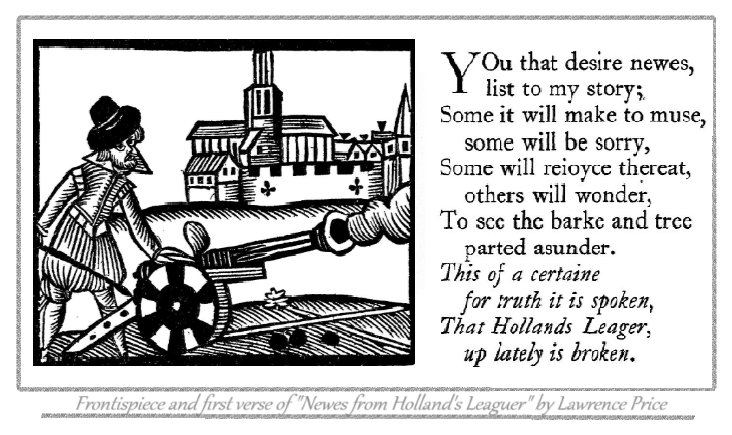
In December 1631, forces of law and order attempted to raid the most deluxe bordello London had ever seen, known to history as Holland’s Leaguer. The soldiers sent in must have thought the closure of this 30-year-old brothel would be a piece of cake – but they had reckoned without owner Bess Holland. There followed a standoff in the heart of London that lasted weeks. I try to piece together what happened despite an appalling lack of contemporary evidence.
Note: My dates follow the post-1752 calendar, starting the new year on 1st January. Hence January and February 1632 in my narrative would have been in 1631 at the time.

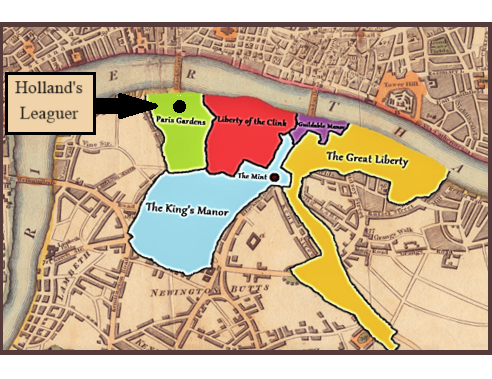
Southwark lies on the south bank of the Thames opposite the City. From early medieval days it was the site of much drinking and revelry. The puritan City’s hard-won control of three neighbourhoods here failed to suppress brothels (aka ‘stews’ or ‘bawdy houses’), bear-baiting arenas and theatres because these all stood in other parts of Southwark – in particular the riotous Liberty of the Clink, property of the Bishop of Winchester, but also the Mint, a tiny lawless enclave, and the area I wish to focus on – Paris Garden: Ninety acres of bleak, marshy ground, prone to flooding despite a river embankment.
← The manors of Southwark. The Guildable Manor, Great Liberty and King’s Manor had fallen under the influence of the City by 1550, forming the ward of Bridge Without, but the Liberty of the Clink, the Mint and Paris Garden remained free to provide entertainment for the growing London population. This usually involved combinations of beer, sex, plays, animal cruelty and criminal activity.
Paris Garden had once been owned by the Knights Templar, giving it liberty status – beyond the reach of local authorities. When that order was suppressed in the early 14th century it passed to the Knights Hospitaller, who leased it to various parties over the years. A document of 1420 contains the first surviving use of the name Paris Garden, but the origin of this is unclear. The Survey of London states: “No reasonable explanation … has been found” but the most favoured theory concerns Robert de Paris. He lived in the area and managed nearby Marshalsea prison from 1384 to 1392. In 1391 the City authorities ordered that some rubbish be dumped next to Robert’s home, before things got really noisome chez de Paris with Richard II’s 1393 proclamation requiring City butchers to use the area as an offal dump. Robert, unsurprisingly, made a rapid exit. Despite the whiffiness, the Duke of Bedford leased Paris Garden and, as it was still a liberty, charged felons and others fleeing the forces of law and order 4d to reside there in safety. If they left, they would be charged a higher fee to return.
Despite this unpleasant history, at some unknown date a very desirable residence was built in Paris Garden – a fortified manor house complete with a moat filled by the Thames. The house was, however, soon occupied by those of dubious virtue, while nearby unlit pathways and woods gained their own reputation as a setting for intrigues criminal, amorous and treasonous. In the early decades of the 16th century the house fell into disrepair but William Baseley, future Bailiff of Southwark, leased, repaired and reopened the manor house for gambling – “cardes, dyze and tables”. In 1536 Paris Garden was surrendered by the Knights Hospitaller to Henry VIII and given to his new queen, Jane Seymour. Little changed: Baseley continued his business by licence of the King. A clampdown on brothels and gaming houses in 1546 hindered business but these rules were repealed on the succession of Edward VI the following year. A bear-baiting arena was added and Baseley prospered; on his death some twenty years later his estate included at least five brothels and other significant land holdings.
In 1578 the land was sold by the crown to Queen Elizabeth’s Lord Chamberlain (and cousin), the 1st Baron Hunsdon. A foreign visitor known only as L. Grenade described in that year a spectacle featuring a fight between large mastiffs, a bear, a bull, a horse and an ape at the arena. Still in 1578, the French ambassador was spotted intriguing with conspirators in the area. One Sunday five years later the crowded stands of the arena collapsed killing seven, injuring more and pleasing the self-righteous puritans of the City no end. It was quickly rebuilt, but in 1595 the 2nd Baron Hunsdon, like his father the patron of a professional theatre company, allowed entrepreneur and impresario Francis Langley to build the Swan Theatre on the site. Langley also ran the manor house, still a gambling den, which gained a reputation for high stakes and exclusivity – Thomas Nashe claimed in 1593 that dinner there could cost an astronomical £20, £6,000 today.

Around 1602, with Langley dead, Hunsdon – himself dying of venereal disease – leased the decaying manor house to Bess Holland, who intended exploiting its exclusive reputation by running it as a high-class brothel. Hunsdon was likely familiar with the trade – contemporary satirist John Marston hinted that he was gay and ran his own male brothel in Hoxton. As a result, it is known that the lease included at least one unusual clause: It would be void if one woman was found bringing in more than two men, or one man visited more than two women in one day. Sadly, the original lease has now been lost.
Almost nothing is known of Holland’s life before this point. A pamphlet, ‘Holland’s Leaguer’ by Nicholas Goodman, published in January 1632, purports to contain her backstory and is the main source for historians. However, I can’t believe this is even remotely trustworthy. For one, it would have been written at breakneck speed to exploit current events, consequently with little research; secondly, it has an agenda and the early life of Holland is fashioned to fit that. I should point out that nothing is known of Goodman either. Maybe he was acquainted with Bess, maybe Goodman was the pseudonym of someone well-known. We will never know.
Goodman claims Holland was a beautiful but spoilt child, born into a respectable country family of moderate wealth. Visitors told the young Bess tales of the great metropolis. Showing signs of nymphomania, she persuaded her parents to allow her to go to London. Staying with family friends, she married a respectable City merchant, Mr. Holland, but a whirlwind of relationships created Bess the courtesan, the prostitute. Careful with her earnings, and avoiding both disease and the law, she decided to become a brothel owner or ‘bawd’. Take all this with a pinch of salt. For a start, legal papers from 1632 do imply Holland was married, but it is likely Mr Holland was far from respectable – the Holland family was a fixture of the brothel-keeping world in Elizabethan times.
Goodman’s claim that in 1602 she was looking for new premises after being forced from an earlier London location is more reasonable. This location is variously reported to be Cocke Lane, Finsbury or even the decayed royal mansion of Castle Baynard, which would help explain her leasing the manor house as it had the potential to offer similarly superior facilities. The end of her first enterprise seems to have occurred in late 1597. Court records suggest that at that time Elizabeth Holland was arrested for “evil and loose turpitude” and keeping a brothel. She got the usual punishment for bawds: ‘Carting’ – being taken around the City in a cart “with a paper on her head showing her offence” followed by apprentices and others beating basins to attract attention. She would then have been sent to Newgate prison until she paid a fine of £40 (£7,700 today). It is possible she bribed her way to freedom; she certainly laid low for a period.
→ The Agas map, late-1550s. The manor house with its grounds and moat is centre-bottom. Across the Thames is Bridewell Palace, by 1600 a prison for sex workers; not visible is a ducking stool for ‘scolds and wantons’ close to Paris Garden steps (lower right). Rather unnerving neighbours for a bawd.
Leasing the manor house was a master stroke. Adopting European best practice Holland created a luxurious interior with fresh linen, fine cuisine, gambling and dancing. The tidal river removed waste from the moat. Tasteful portraits of the available women aided clients in making a selection. According to Goodman, the entertainment was “full of variety and changes, and [Bess] would ever suit them to the nature of him that was entertained”. The high prices, moat, drawbridge, and a bouncer “monstrous in shape and condition” ensured privacy, exclusivity and defence against raids. The house became a destination for nobility; both King James I and his favourite the Duke of Buckingham were frequent visitors, and where the king goes courtiers follow. Along with its liberty status, the royal connection meant authorities had difficulty asserting any control; bribery dealt with troublesome officials, such as Surrey magistrates.
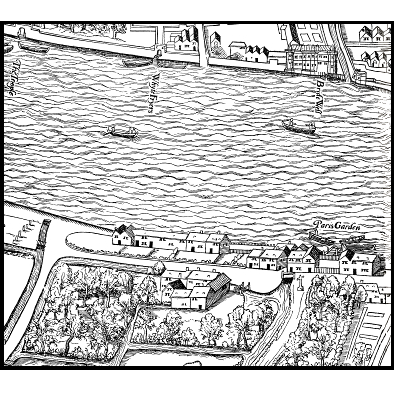
Like all the brothels on the south bank, the manor house was within a short boat-ride of the densely-populated City, with a large potential pool of clients beyond the nobility: Wealthy residents, along with rich foreign merchants come to trade. And the building’s location had another advantage. Theatres, like brothels, required a location away from puritanical authorities, and taking in a play was often seen as a prelude to a visit to the local bordello – for the rich minority as well as the poor. At one time or another the manor house had as near-neighbours the Swan, Rose, Globe and Hope, the last also doubling as a bear-baiting arena.
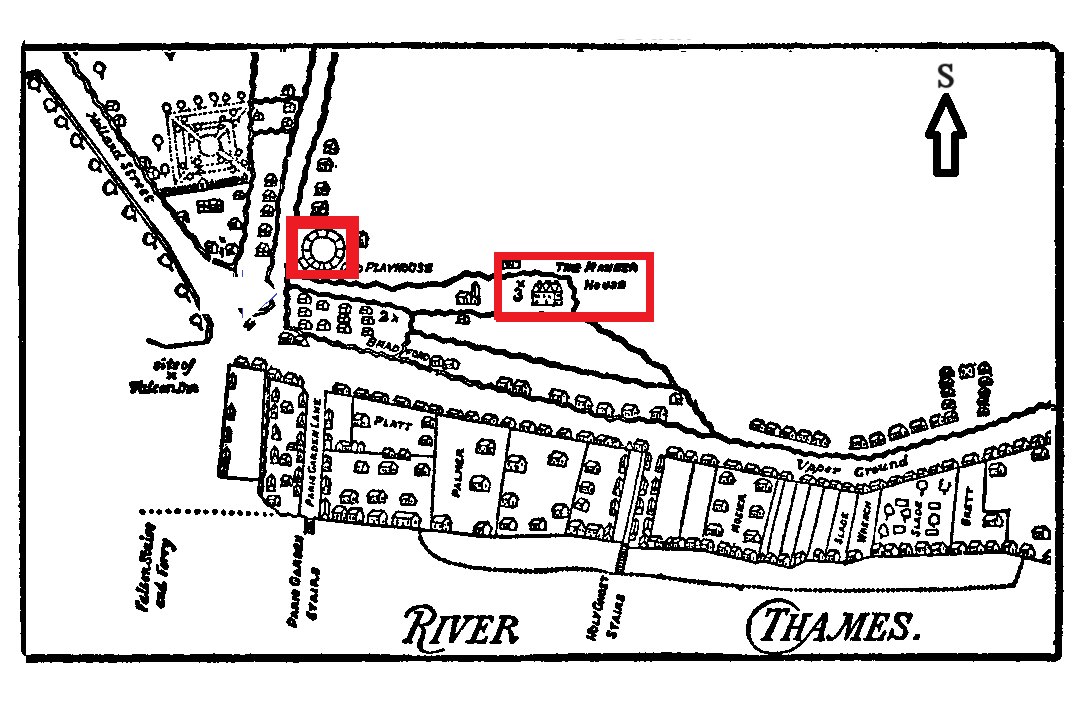
← The northern part of Paris Garden, in a plan derived from a 1627 survey. In the centre is Holland’s, politely labelled ‘The Mannor [sic] House’. To its left is the Swan, labelled ‘Old Playhouse’. Never a success, the Swan courted controversy and was often closed by authorities as a result. It fell into dereliction after a last production in 1621. Further left is Holland Street, formerly Gravel Lane. This reflects the later date of this copy – it would have borne its earlier name in 1627. The main road between the manor house and river is Upper Gound, built next to the old river embankment. Both Holland Street and Upper Ground exist to this day.
Southwark’s stews had a history dating back 600 years, but most had been basic taverns or houses; never anything as lavish, expensive or select as Bess Holland’s new enterprise. Kings, nobility, British and foreign merchants, wealthy playgoers – Holland welcomed them all in an upmarket clip joint, fleecing them for every gold coin they had with exquisite manners and perfect service. No wonder she would be in business at the manor house for almost three decades.

After years of success, storm clouds began to gather. The first problem was the death of King James I in 1625. As a client he was content to see her flourish, and royal patronage is always good for business, but his successor Charles I was sexually less permissive and not one to frequent bawdy houses. Without royal patronage other wealthy clients stayed away. Without these men to protect her, income fell and any reports of trouble or nuisance in the neighbourhood caused by Holland’s clients were taken more seriously by authorities. Worse was to come: The new regime began to come down hard on brothels, partly due to the influence of puritans, partly due to rapidly spreading syphilis. For example, a 1626 ordinance tried to stop “notorious common and professed whoares [sic]” operating on the sabbath. This had some effect – less in Southwark where the authority of officials could still be questioned and corrupted, but the spread of puritanism began to limit even that option.
The surroundings weren’t helping. Paris Garden was sinking ever lower into the depths of iniquity; Thomas Lupton wrote in 1632 that it “may better bee termed a foule dene then a faire garden … Here come few that either regard their credit or losse of time; the swaggering roarer, the cunning cheater, the rotten bard and the bloody butcher have their rendezvous here” – the mention of butchers was probably due to that trade being the most ardent devotees of baiting. The rotting Swan didn’t help; Goodman described it as “fallen to decay and like a dying Swanne, hanging downe her head, seemed to sing her owne dierge.” And Holland, like the Swan, was getting on in years.
As if all this wasn’t enough, there was also the tendency of apprentices on their one day off – Shrove Tuesday – to get drunk and riot. Property damage was inevitable, with theatres and brothels frequent targets. They were often selected through private spite although any that had a degree of infamy could be a focus for the ire of the apprentices, and Bess Holland’s discrete and exclusive establishment was about to become very infamous indeed.

The OED states that ‘leaguer’ is a military camp, especially one besieged (‘beleaguered’ has the same root). The name ‘Holland’s Leaguer’ probably came into use during the siege and has been used ever since. I can find no use of the name before the siege, although to confuse matters an earlier meeting place for Dutch prostitutes close by was known as Holland’s Laager.
The precise reason a raid was ordered on the manor house in late 1631 is unknown. Kings had tried ‘inhibiting’ Southwark stews in the past, notably in 1506 and 1546, but this time only Holland seems to have been targeted. Contemporary references to the raid and resulting siege are scarce, and the authors had their own agendas, but at least these commentaries may have been written from personal knowledge. Using them as best I can, I believe events unfolded as follows:

An attempt to eject Holland from the manor house is made by constables or watchmen under the control of the Lord Mayor, the Bishop of Winchester or Surrey magistrates. Aware of the uncertain status of these men in the liberty, and knowing the Bridewell and its violent punishments await her if she yields, Holland outwits her foes: She opens the gate and lowers the drawbridge but as they cross, it is deliberately collapsed, dumping them in the moat where they are joined by the contents of the women’s chamber pots. With this failure the king’s troops – with “good cause and legal authority” in the liberty – are sent to Southwark. Holland refuses to allow access and hurls abuse and offal at them. Goodman states that “Shee standes uponn her Gunnes: hanges oute a Flagge of Defiance and bids them enter at their perill…”. A bizarre standoff begins as the men besiege the site, unwilling to launch a full assault against a brothel and its security staff.

More troops arrive periodically. A play by Ben Jonson protege Shackerley Marmion, ‘Holland’s Leaguer’ is a success, with six consecutive performances at the Salisbury Court Theatre close to the Bridewell. A brief scene depicts a visit to Holland’s by roistering cavaliers, allowed in only because they aren’t soldiers. This scene was probably added at the last moment because it was newsworthy – despite the title the main plot has little to do with the ongoing siege or Bess Holland. Nonetheless, the play puts an unwelcome spotlight on events in Southwark, and Holland in particular.

Holland must begin to appreciate that with knowledge of the siege widespread, she is in real danger on Shrove Tuesday if she stays put; the troops, after all, are hardly likely to stop the apprentices attacking after their own earlier humiliation. She must also consider the deteriorating surroundings and a regime set against her: To put it bluntly, the game is up. She flees, perhaps by secret passage but more likely by bribing the troops with some of her remaining wealth. It is unlikely she is arrested, as this would leave some documentary trace. The only thing we know for sure is that Bess Holland leaves the manor house and vanishes from history. Felix Hunt and Robert Rogers immediately buy the lease.

Goodman’s pamphlet is published. Although mostly a fictional biography of Holland providing what may be an allegory of threats to the Church of England from Catholics and Puritans, the last pages deal directly with events in Paris Garden. It claims the siege is ongoing, but was probably completed sometime before the 20th. The pamphlet, like the earlier play, provides unwanted publicity and does Holland’s reputation no favours.

Holland fails to obey a summons to the Court of High Commission, the highest Church court to punish vice. This action is the second part of the authorities’ attack on Holland. The summons report states that “Elizabeth Holland a woman of ill reporte and her husband were called upon intimation [fine] of £100 but they did not appeare, therefore another intimation of £200″. £100 is around £20,000 today. One of the bishops sitting in judgement is the Bishop of Winchester – Holland’s neighbour.

There are “many thousands of scrolls and papers cast abroad in the City [encouraging] apprentices to demolish the said houses” on the fast-approaching Shrove Tuesday. In desperation Hunt and Rogers, with other residents and brothel owners, appeal to the privy council to protect them. They have been granted warrants for the local watch to attend but fear this won’t be enough, and pray that “the Trained Bands of Southwark maye attende alle thatte daye …”. After the appeal a second summons is issued. The summons report states that “Elizabeth Holland was called but appeared not, it was said she was gone away from her house against shrovetyde: and that the tenant had petitioned the Bishop of Winchester that the house might be guarded for fear of pulling down”. This is the last mention of Bess Holland in official papers.

There are no records of events on Shrove Tuesday, but this itself suggests the apprentices don’t cause significant damage. The Southwark Trained Bands do their job, and there must be a collective sigh of relief in Paris Garden.

A ballad by Lawrence Price, ‘Newes from Holland’s Leaguer’, is published. Historians suggest this may be a disguised attack on the Dutch rather than Bess Holland. It claims that “Hollands Leager, up lately is broken”. It is unclear if this means the manor house was physically damaged on Shrove Tuesday. It also claims Holland has gone to Bewdley, perhaps referring to the town in Worcestershire, but more likely another brothel in Southwark. However, there is no additional evidence to support either hypothesis.
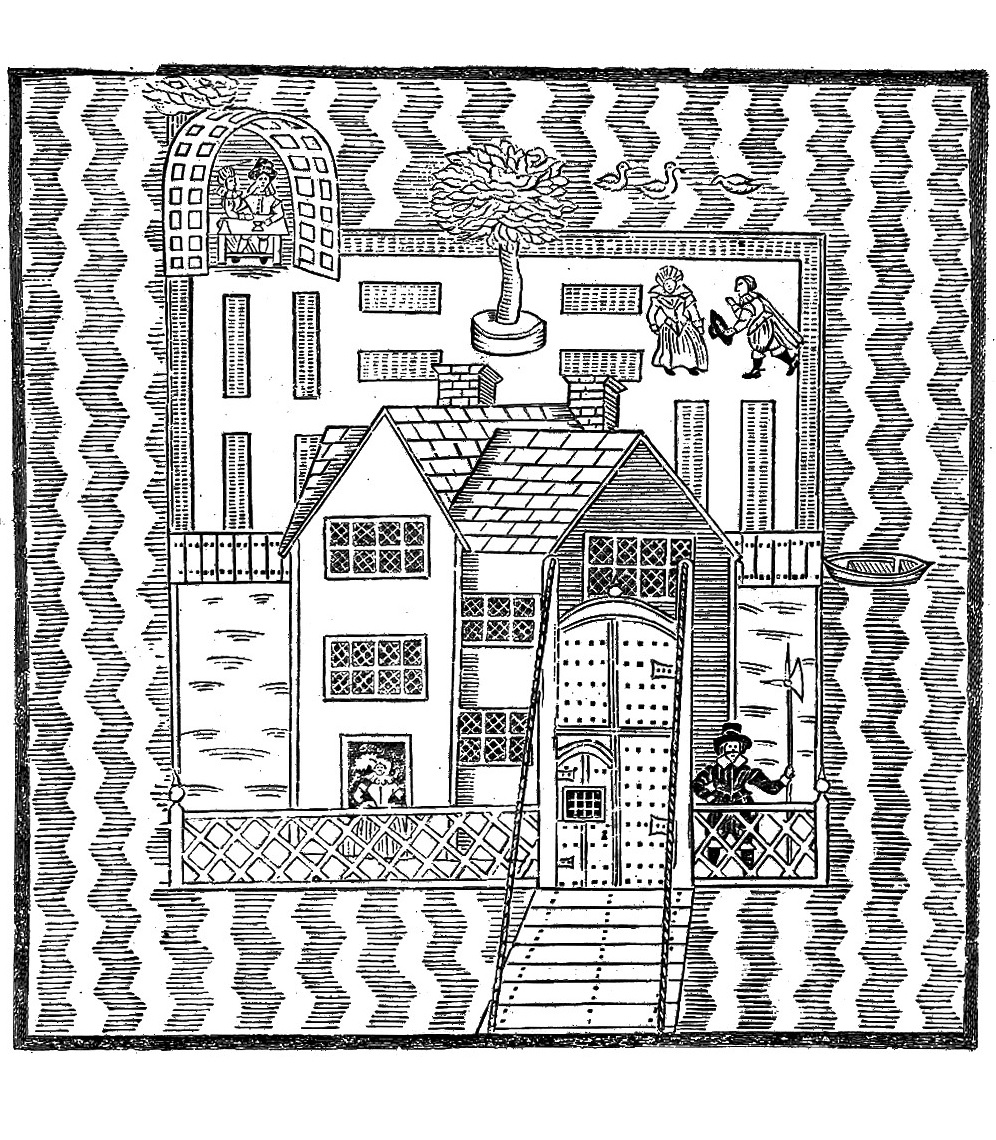

In 1633 another ballad, “The Joviall Broome Man” by Richard Climsal appeared. It recounts the battles a Kentish soldier has heroically and successfully fought across the globe, many rather far-fetched – such as rescuing Helen of Troy. But at Holland’s Leaguer, the subject of the final verse, the soldier admits “But there the service provd too hot”, and he laments that on his return from the leaguer he is “Naked, Hungry, cold and dry”. This doesn’t describe a battle at all; the soldier was being relieved of his wealth and his energy as a client of Bess Holland. She was entering folklore.
In 1637 a bankrupt City merchant of French origin, John Thierry, and his mistress Ursula Bapthorpe were charged with having transferred his wealth to her to avoid his creditors. Ursula “came from Hollands Leaguer where she was a common prostitute …” Twenty years later, the manor house, officially named in the sale documents Holland’s Leaguer, was sold to Hugh Jermyne, a draper. By this time much of Paris Garden was being used by cloth bleachers, and the manor house garden was no exception. The building was still surrounded by a moat; the gardens within stated as one acre. Later still it became a lodging house.
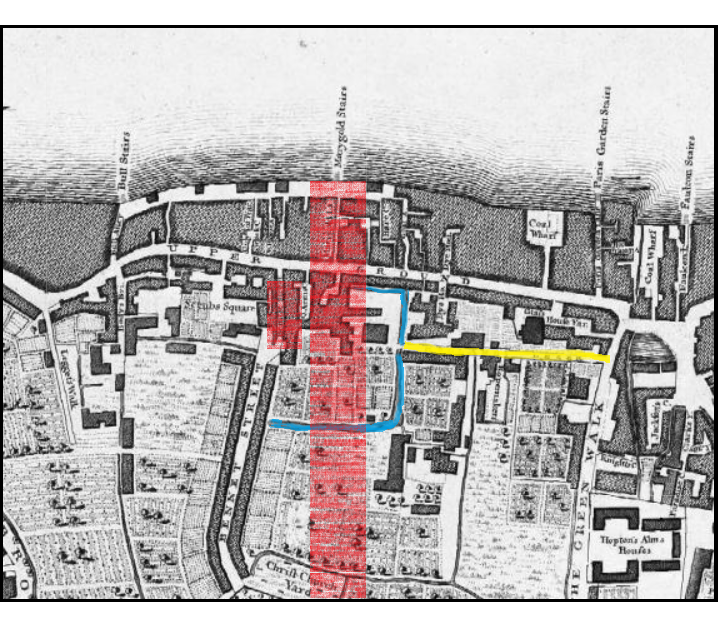
John Roque’s map of 1746 shows the moated garden partly surviving, along with several structures, which could include the manor house. The lane approaching the site from the east, along which the troops would have advanced, is labelled Holland’s Leger by Roque.
For such a central location as Paris Garden, development was remarkably slow. But when Blackfriars Road, leading to the first Blackfriars Bridge, was pushed through in 1769, whatever remained of the manor house, moat and gardens was swept away. Nothing else significant occurred until new sewage and drainage pipes were installed in 1812 to reduce the threat of flooding. This made the area attractive to builders, and the remainder of Paris Garden was built over. The lane vanished under a railway and industrial development later in the 19th century.
← The Roque map. The lane is in yellow, surviving moat in blue, route of Blackfriars Road and the footprint of apartment block One Blackfriars in red.

So, the site of England’s most bizarre siege is now occupied by Blackfriars Road and buildings on either side: Bankside Yards to the east, and to the west the controversial One Blackfriars, containing 274 eye-wateringly expensive apartments.
← Looking south from Blackfriars Bridge in 2023, with One Blackfriars on the right.
→ The urban garden at the base of One Blackfriars probably occupies part of the manor house garden. Pleasingly, there are trees, seats and water features.
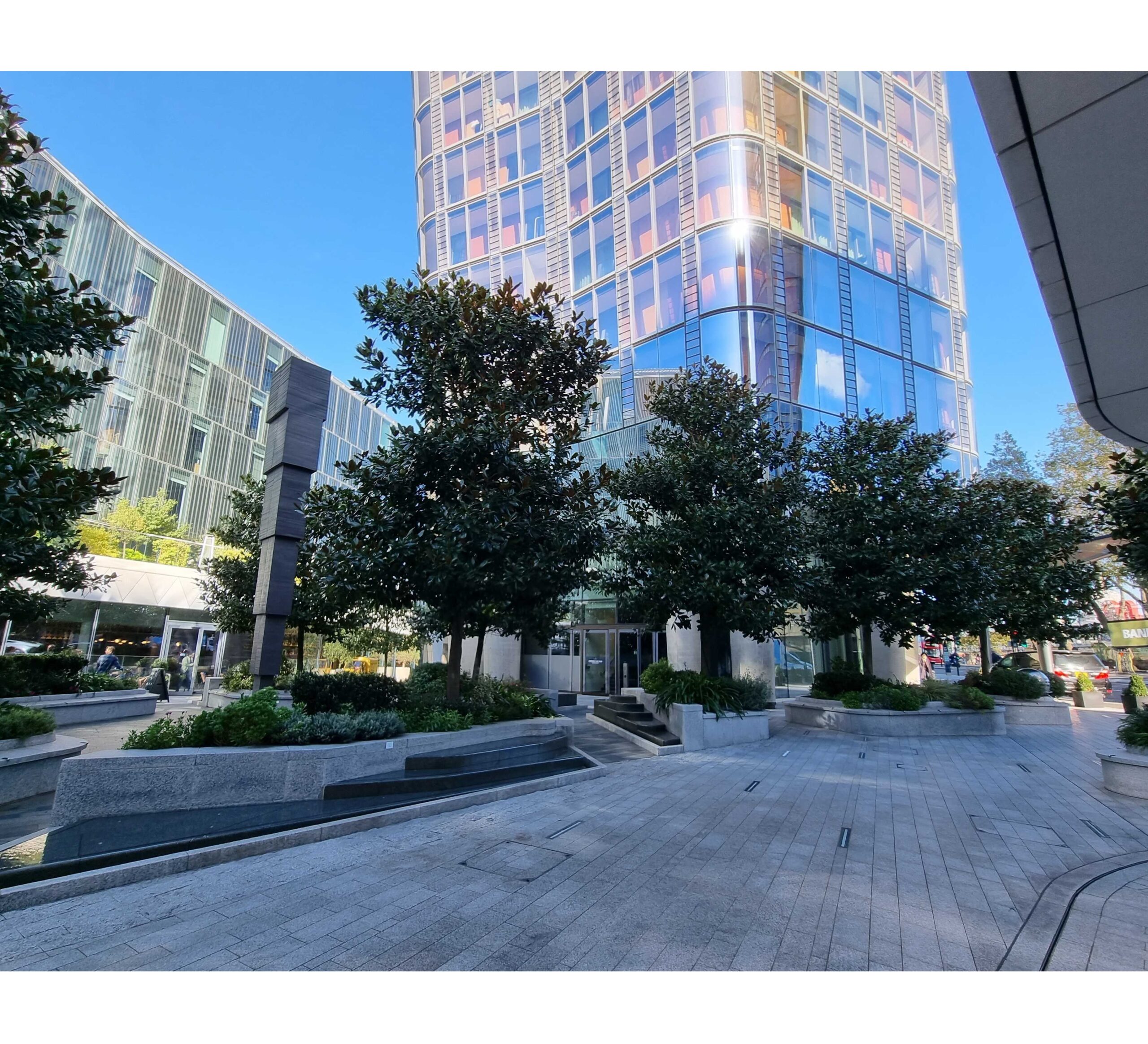
I doubt couples seated in the One Blackfriars gardens today would want to know what their predecessors were getting up to 400 years ago. The business-like flirtations in the garden then would have been referred to as “doing a spell of embroidery, or fine work”. How coy our ancestors were – even in a brothel where an astute, criminal, corrupting businesswoman held the forces of law and order at bay for a month. Sadly, all that remains now are those evocative street names to excite the imagination – Holland Street, Upper Ground and a later road christened Paris Garden.

Nearest Stations: Blackfriars, Southwark
Selected Bibliography:
Credits: